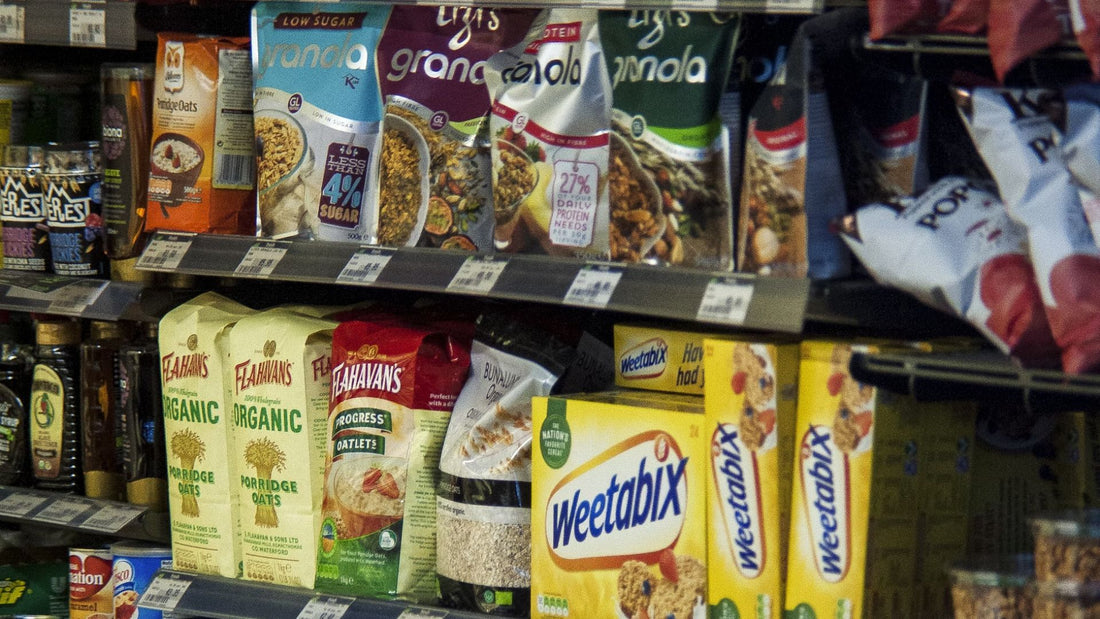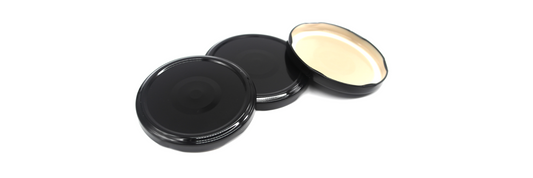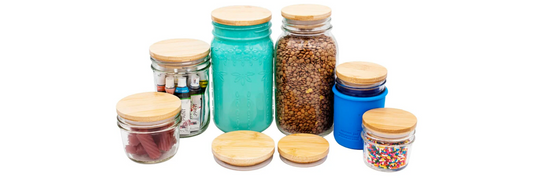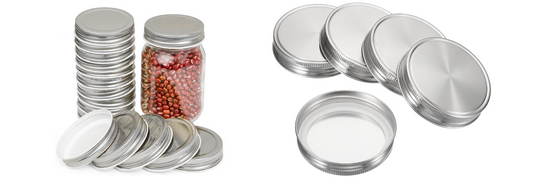Packaging is more than a box. It's a silent ambassador for your brand, silently influencing purchase decisions. This guide empowers you to create product packaging that captivates. We'll explore what packaging design is, how to choose the perfect fit, and walk you through designing brand-aligned packaging. We'll even equip you with key packaging terms for a smooth design journey.
- What Makes A Bad Logo Design? How Do You Know If A Logo Is Good Or Bad?
- 10 Graphics Design Trends to Inspire Your Business's Visual Identity in 2024
- 12 Brand Designs Ideas for Food Business
What is Packaging Design?
Packaging design is the art and science of crafting the exterior of a product. It encompasses everything from the physical structure and materials used to the visual elements like graphics, colors, and typography. But it's more than just aesthetics. Effective packaging design strikes a balance between:
- Protection: Ensuring your product arrives safely and securely.
- Functionality: Making the packaging easy to open, transport, and store.
- Branding: Communicating your brand identity and values.
- Marketing: Grabbing attention on shelves and influencing buying decisions.
Overall, packaging design is a silent salesperson. It's the first impression your product makes, silently communicating its quality, purpose, and the brand story behind it.
In the next section, let’s find out how to choose the best packaging for your product and step by step to design packaging for your brand.
Essential Information Before Designing Your Product Packaging
Great packaging is a silent salesperson. It safeguards your product, connects with your target audience, and builds brand identity. Here's how to choose the perfect fit:
- Know your product: Measure it precisely to find the right size, considering any variations. Delicate items need strong materials and cushioning. Does it require specific storage conditions? Factor that into material selection.
- Target the right audience: Understand your ideal customer's demographics and buying habits. Design choices that resonate with them will create a stronger emotional connection. Consider where your product will be sold (online vs. physical stores) to optimize its presentation for each environment.
- Build brand integration: Seamlessly integrate your brand colors, fonts, and logo into the design. Include clear, legal information and choose a design style that reflects your brand personality.
- Be budget-conscious: Factor in design fees, printing costs, and material selection. Explore sustainable options that can save money and align with your brand values.
By carefully considering these factors, you'll select packaging that protects your product, resonates with your target market, and strengthens your brand identity – all within your budget. Look out for the next section on designing impactful packaging!

Step by Step to Design Packaging for Your Brand
While understanding your product and gathering essential information are crucial steps, achieving the perfect product packaging design requires a more comprehensive approach. The design process can feel overwhelming at times, but fear not! This guide provides a clear, step-by-step roadmap to transform your vision into a powerful brand extension.
Step 1: Understand the Layers of Packaging
Before diving into design, familiarize yourself with the different packaging layers:
- Primary Packaging: This is the layer that has direct contact with your product. Its primary function is to provide protection during transport and storage. Examples include bottles, boxes, or blister packs.
- Secondary Packaging: This layer acts as the brand's canvas. It's where you tell your brand story through visuals, colors, and messaging. Think of cereal boxes or cosmetic containers.
- Tertiary Packaging: This outermost layer is primarily used for bulk transportation and storage. It's often plain and designed for efficiency in the supply chain. Cardboard boxes used for shipping individual product packages are a common example.
Understanding these layers allows you to make informed decisions about material selection, functionality, and brand communication at each stage.
Step 2: Choose the Right Type of Packaging
There's a vast array of packaging options available. Consider both the practical needs of your product and how each type aligns with your brand identity.
- Functionality: Does your product require a rigid box for protection or a flexible pouch for convenience?
- Brand Identity: Does your brand prioritize sustainability? Explore options made from recycled materials or offer a refill system to reduce waste.
Step 3: Printing Techniques for Your Design Vision
The printing method you choose will depend on factors like budget, quantity, and desired visual effects. Here are some common options:
- Offset Printing: Ideal for large production runs, offering high-quality, cost-effective printing for detailed designs.
- Digital Printing: Perfect for smaller quantities or prototypes, with a faster turnaround time but potentially higher per-unit cost.
- Flexography: Well-suited for printing on flexible packaging materials like plastic films or pouches, often used for food and beverage products.

Step 4: Craft a User-Friendly Information Architecture
Your packaging should provide clear and essential information, adhering to legal requirements. But it can also be a storytelling tool. Here's how to create a user-friendly information architecture:
- Prioritize Clarity: Ensure legally required information like ingredients or instructions are easy to read and understand.
- Brand Storytelling: Integrate text and visuals that tell your brand story and resonate with your target audience. Think about the emotions you want to evoke and the message you want to convey.
Step 5: Evaluate Your Design for Success
Before finalizing your design, take a critical look at its effectiveness. Consider these aspects:
- Functionality: Does the packaging adequately protect the product? Is it easy for customers to open and use?
- Brand Alignment: Does the design reflect your brand identity and resonate with your target audience? Does it clearly communicate your brand message?
- Shelf Presence: Will the packaging stand out on a crowded shelf? Will it entice customers to pick it up and learn more?
Step 6: Gather Feedback for Continuous Improvement
Gather feedback from various sources to ensure your packaging design is on the right track:
- Internal Team: Get diverse perspectives from your design team, marketing department, and even customer service representatives.
- Target Audience: Conduct surveys, focus groups, or A/B testing to gauge customer perception and preferences.
- Competitor Analysis: Analyze your competition's packaging. Identify what works well and where you can differentiate yourself.
Step 7: Get the Right File for Printing
Once you've finalized your design, ensure you have the correct file format for printing. Most printers require vector files like .ai or .eps, which allow for high-quality scaling and production.
By following these steps and considering these factors at each stage, you can create packaging that's not just aesthetically pleasing, but also functional, brand-aligned, and sets your product apart on the shelf.
In addition, effectively navigating the world of packaging design requires fluency in its specific language. In the next part, let’s explore some common packaging design terms.
Packaging Designs Terms You Need to Know
The world of packaging design blends technical aspects with creative freedom. This glossary equips you with key terms to navigate both seamlessly:
File Formats
- Adobe Illustrator File (AI): A vector file format ideal for creating scalable graphics used in packaging design.
- EPS (Encapsulated PostScript): Another vector file format widely accepted by printers, ensuring high-quality printing.
- PDF (Portable Document Format): A universal file format for sharing final packaging designs, often used for printing specifications.
- Raster File Type (e.g., JPG, PNG): Uses pixels to represent images, suitable for photographs but not ideal for scaling in packaging design.
- Vector File Type (e.g., AI, EPS): Employs mathematical paths to create graphics, allowing for infinite scalability without losing quality – perfect for logos and illustrations in packaging design.
Essential Terms
- Barcodes (UPC and EAN): Machine-readable codes used for product identification and tracking at the point of sale. UPC is common in North America, while EAN is used in Europe and other regions.
- Bleed: The area that extends beyond the intended cut line of the packaging. It ensures no white edges appear during the final trimming process.
- Canister: A cylindrical container with a lid, often used for powders, grains, or tablets.
- CMYK (Cyan, Magenta, Yellow, Key Black): The four-color printing process used to create a vast range of colors for packaging design.
- Dieline: A flat blueprint of the packaging layout, including folds and cuts, used to visualize the final 3D form.
- Pantone (PMS): A standardized color matching system that ensures consistent color reproduction across different printing processes.
- Offset Printing: A cost-effective printing method ideal for large production runs, delivering consistent color results.
This glossary empowers you to navigate the technical aspects of packaging design with confidence, allowing you to focus on crafting impactful packaging that speaks volumes about your brand.
Conclusion
Selecting the right packaging goes beyond aesthetics; it's a strategic investment. By understanding your product, targeting your audience, and integrating your brand identity, you can create packaging that safeguards your product, sparks customer connection, and becomes a powerful brand extension.









